The first time you set out for an overnight backpacking trip can be extremely intimidating. This backpacking packing list makes it easy – itemizing everything you need to bring, from the best lightweight gear to safety essentials, as well as tips, hacks, and more.
Having enjoyed numerous backpacking trips throughout the western U.S. over the years, we’ve also compiled our own personal checklist into a downloadable PDF for easy reference.
Note: this is a generalized backpacking packing list, intended for summer trips in moderate weather and up to 4-5 days.
Always conduct diligent research localized to your planned route, including checking the weather forecast and other potential hazards (like fire maps or flash flood warnings) before you depart.
If the region has a visitor center or park ranger station, stop by to discuss your trip prior to departure.
Jump to:
- Backpacking Packing List: Overview
- Clothing
- Accessories
- Toiletries
- Equipment
- Hiking and Camping Accessories
- Safety Gear and First Aid
Backpacking Packing List: Overview
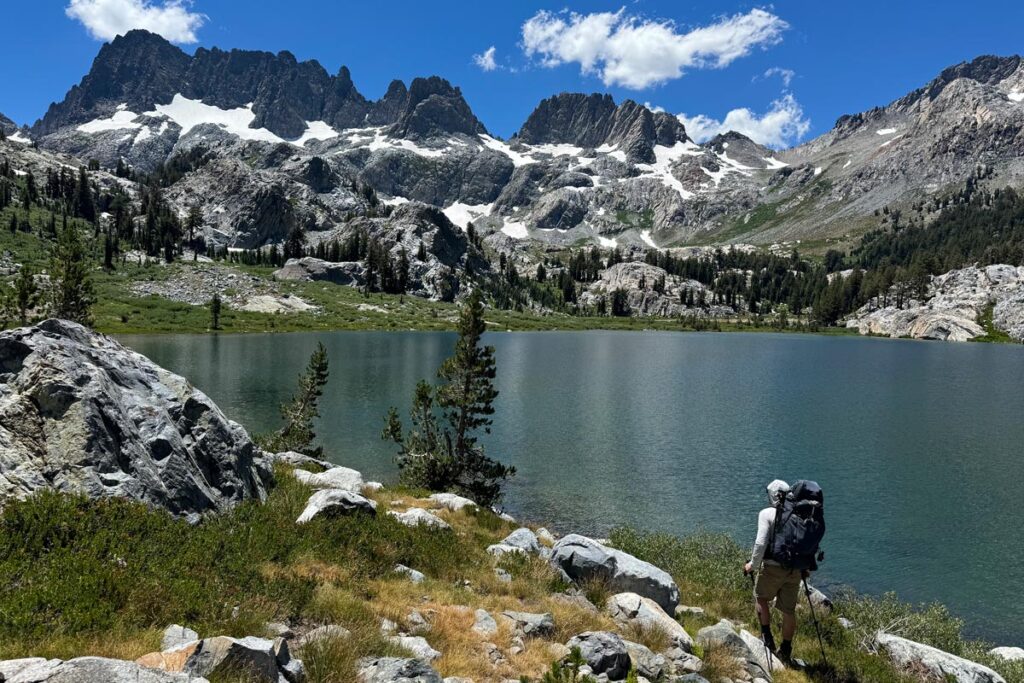
The cardinal rule of any backpacking packing list is to minimize weight wherever you can.
Be ruthless about it – leave any “nice to have” at home, and don’t underestimate the importance of any weight saved. Even an ounce here, and another ounce there, makes a difference when you’re shouldering the pack up a mountain.
Today, there is a robust industry of extremely lightweight, compact gear for backpacking. Typically though, the lighter it is, the more expensive it is.
Personally, we try to avoid dropping big bucks unless it’s absolutely necessary. In the guide below, we’ll explain when to shill out, and when you can skip it.
Clothing
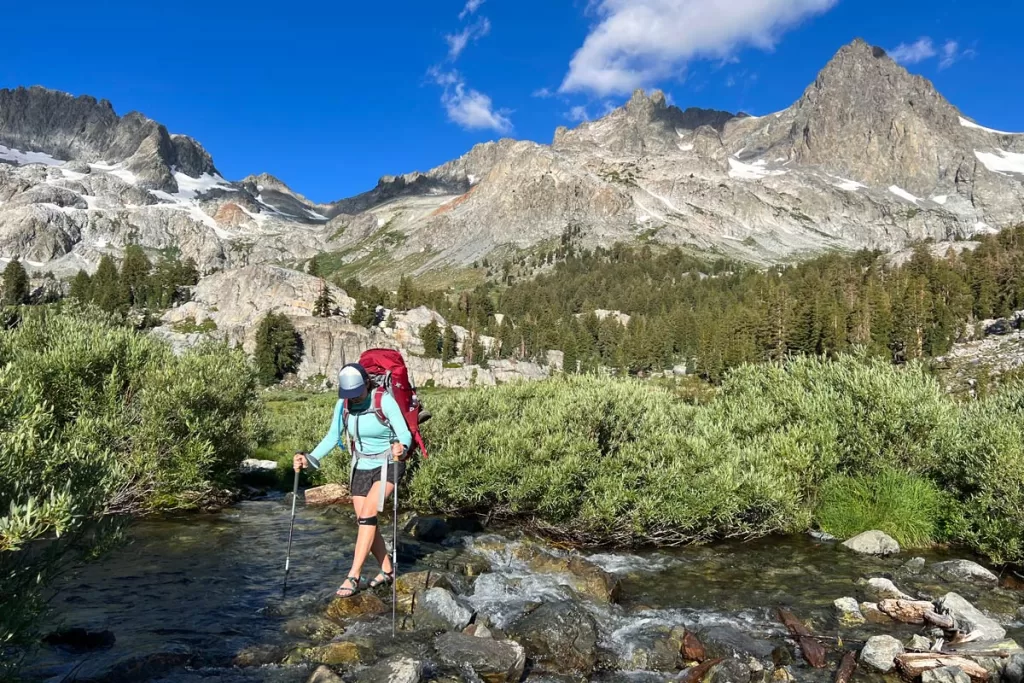
When packing clothing, we recommend one shirt and pair of pants or shorts for every two days, to minimize weight.
If you can, wear a long-sleeved SPF shirt. We personally like the Outdoor Research brand for both men and women– their shirts are exceptionally breathable, and have SPF 50 for sun protection.
Additionally, bring one “nighttime outfit”, such as a clean tee with flannel overshirt, to change in to at night once you make camp. We also sleep in this outfit to save weight. Only bring separate pajamas if you feel you absolutely can’t live without them.
Lastly, a pair of lightweight, waterproof sandals is essential. Sandals help with water crossings, and are ideal for nighttime at the campsite.
We swear by Xero sandals. They won’t win any fashion awards, but they’re so durable that you can even hike in them. (I once developed such bad blisters, I couldn’t wear my hiking boots. I completed a 17-mile day in socks and Xero sandals, no problem).
Clothing Packing List:
- Shirts (1 per 2 days)
- Pants (1 per 2 days)
- Shorts (1 pair)
- Hiking boots (1 pair)
- Waterproof sandals (1 pair)
- Nighttime outfit (1)
- Pajamas **only if you absolutely can’t go without them
- Clean pair of clothes, left in the car (this is a luxury after you complete your trip!)
Accessories
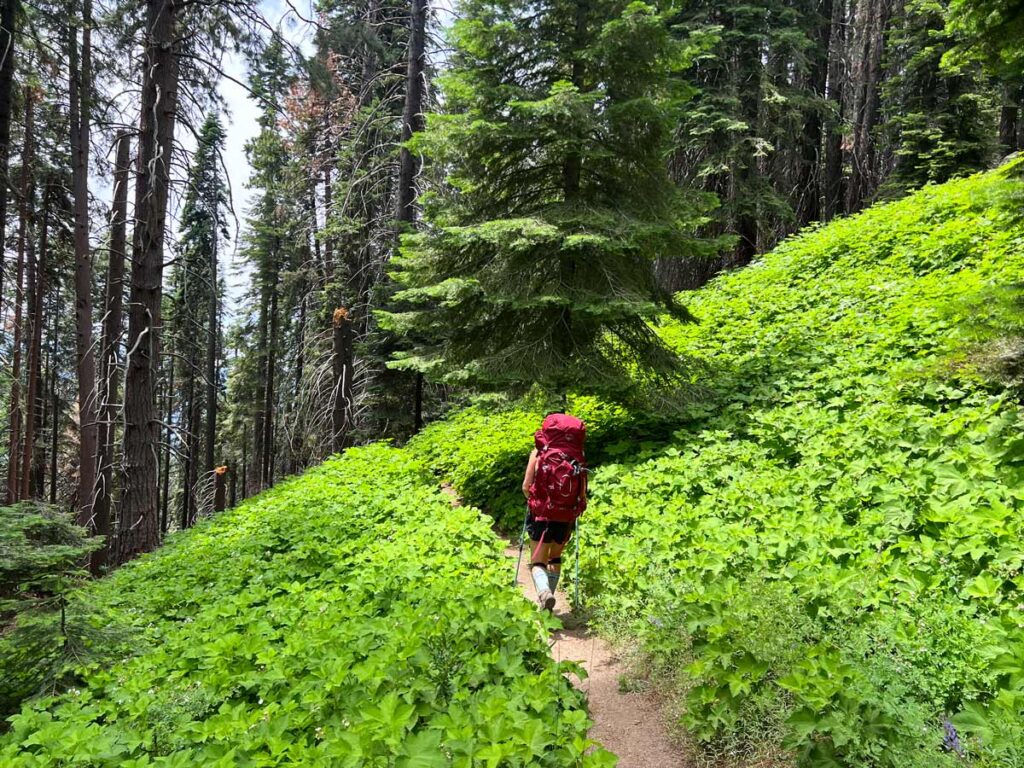
As with the clothing list above, we recommend one pair of socks for every two days on the trail, along with one “clean” pair of socks for nighttime at the campsite and sleeping.
Many of your other accessories will depend on the weather forecast, as well as your own cold tolerance, and may vary from the generalized list below.
Remember: mountain nights are typically chilly, even in the heart of summer. It’s best to be over prepared, rather than spend a sleepless night shivering in your tent.
Accessories Packing List:
- Hiking socks (1 per 2 days)
- Nighttime socks (1 pair)
- Hat
- Sunglasses
- Underwear (1 pair per day)
- Rain jacket
- Long underwear (if needed)
- Puffy coat (if needed)
- Beanie (if needed)
- Gloves (if needed)
- Bandana or neck gaiter (a nice-to-have for dusty trails)
- Ladies: sports bra (1 per 2 days)
Toiletries
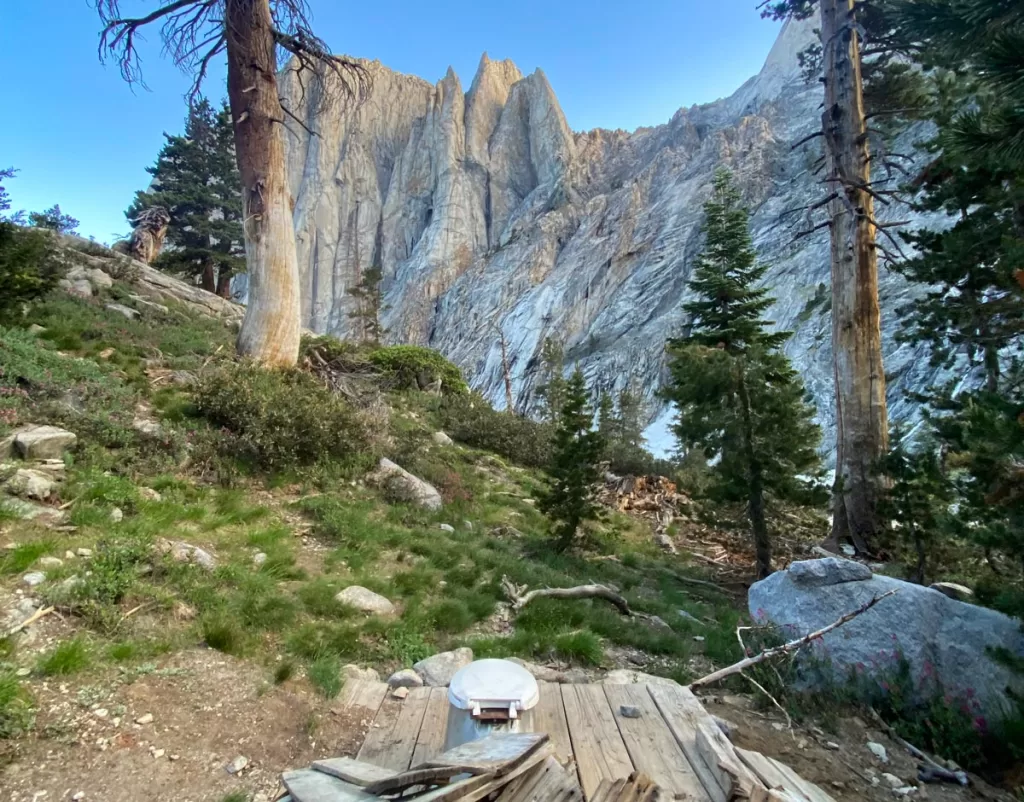
Your toiletries should be pretty minimal – bring only the bare necessities, and travel-size if you can.
And if you’re hiking in bear country, always remember to stash toiletries in a metal bear locker or portable bear canister, 100 yards from your campsite.
Toiletries Packing List:
- Toothbrush, toothpaste, floss
- Lightweight travel comb
- Deodorant
- Biodegradable soap
- Mini towel or washcloth
Washcloth Tip: we prefer an exfoliating washcloth instead of a regular washcloth or mini towel. It helps scrub away extra dirt, grime, and sunscreen, and the resulting feeling of cleanliness at the end of a long day is heavenly.
- Hand sanitizer
- Baby wipes
- Sunscreen and lip balm
Equipment
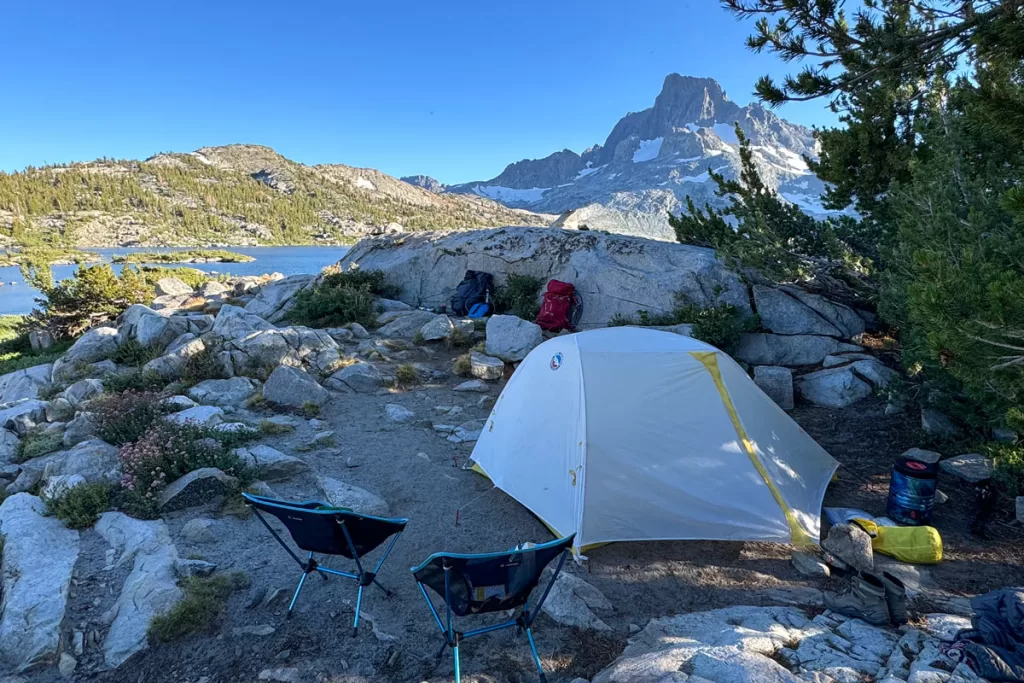
Your backpacking equipment will take up the majority of your pack space and weight load. If you’re going to splurge for the super lightweight stuff, this is where to do it.
For what it’s worth, we’ve included our preferred brands and other notes below, as relevant.
Equipment Packing List:
- Backpacking tent – tents can get extremely pricey, but we don’t see the need to pay top dollar. Big Agnes is a great mid-tier brand: ultra lightweight and durable.
- Backpack and Camelback water bladder
Backpack Tip: we strongly recommend visiting REI or similar outdoor store and trying on backpacks in person before purchasing. Just as every body is built different, packs will feel different and vary by individual. What brand your friend loves may not work for you.
- Water filter – we like the LifeStraw gravity filter best, with Katadyn a close second. Alternately, you can use iodine tablets but the taste is often unpleasant.
- Food rations (see our backpacking food ideas guide for inspiration and a downloadable sample meal plan)
- Compression dry bag(s) – such as Sea to Summit or similar, for condensing your gear in the backpack
- Sleeping bag – sleeping bags can get extremely expensive, with top-tier labels ranging from Nemo and Sea to Summit, to Marmot. However, we’ve had nothing but quality experiences with the REI brand, including the award-winning Magma (available in 15°F or 30°F) or even the dependable Radiant, which retails for under $200.
Sleeping Bag Tip: know your personal cold tolerance, and purchase a temperature rating that accounts for colder temps than you anticipate. For example, during summer backpacking in the Sierra Nevada mountains, nighttime temperatures can drop to high 30s or 40s. My husband runs warm, and is comfortable in a 30°F bag, whereas I'm often cold and need a 15°F (or even 0°F)
- Sleeping pad – we have Nemo, which is a splurge (ultra lightweight, and insulated). If you don’t want to spend as much, Sea to Summit and even Therm-a-Rest have viable cheaper options.
- Camping pillow – again, we like Nemo here. Pillows are easy to inflate, keep their air overnight, and pack down to nearly nothing.
- Backpacking stove and fuel (JetBoil’s Mighty Mo is a dependable stove with an ultra compact design)
- Lighter (and backup lighter)
- Camping bowl, utentils (you can get by with simply a spork and knife)
- Cleaning sponge
- Biodegradable dish soap
- Camping shovel, toilet paper, and Ziploc bags to pack out TP (for when nature #2 calls while on the trail…)
Toilet Paper Tip: compressed toilet paper is life-changing on the trail. These tiny disks take up zero space and expand when wet. When you need to go, simply pour some water on them and you're all set.
- Extra Ziploc bags (to pack out all trash)
- Bear canister (if hiking in bear territory)
- Paper copy of trail permit (if required)
- Camping chair (a luxury, and only if you have room) – we like the Helinox brand, which are extremely lightweight and compact. You can splurge on the ultralight Zero model, although we’ve found the Original works perfectly well for $30 cheaper.
- Plastic backpack liner (to protect against rain) – we’re partial to Gossamer Gear, although there are plenty of cheap options on Amazon too.
Hiking and Camping Accessories
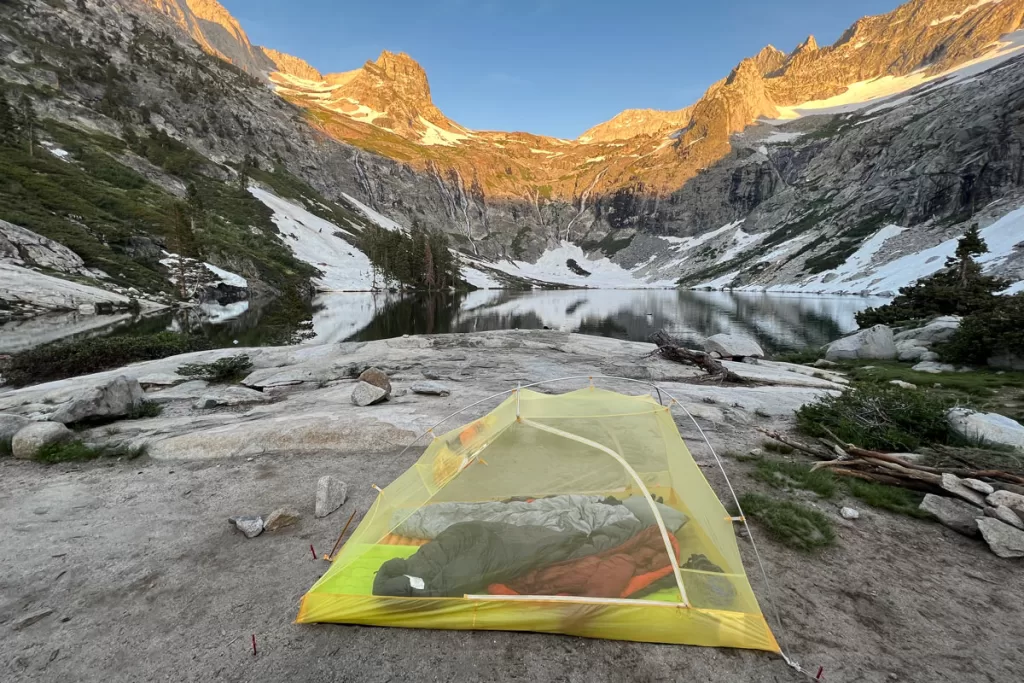
Of the following, a headlamp is critical and we strongly recommend trekking poles – you’d be amazed how much weightbearing load they help support.
But beyond that, many of the remaining accessories are solely nice-to-haves.
Depending on your personal preferences and available space, we’ve included various “creature comforts” to help maximize the enjoyment aspect of your trip, with asterisks denoting “nice to have, not necessary.”
Hiking and Camping Accessories Packing List:
- Headlamp (+ extra batteries)
- Trekking poles
- Photo ID and cash
- Insect repellent
- Bug head net** (depending on your location)
- Portable chargers**
- Camera**
- Trail journal and pen**
- Paperback book**
- Deck of cards**
- Eye mask and ear plugs**
- Knee braces** (with a history of knee problems, these are crucial for us on steep descents. But not necessary for the majority of hikers)
**Nice to have, not necessary
Safety Gear and First Aid
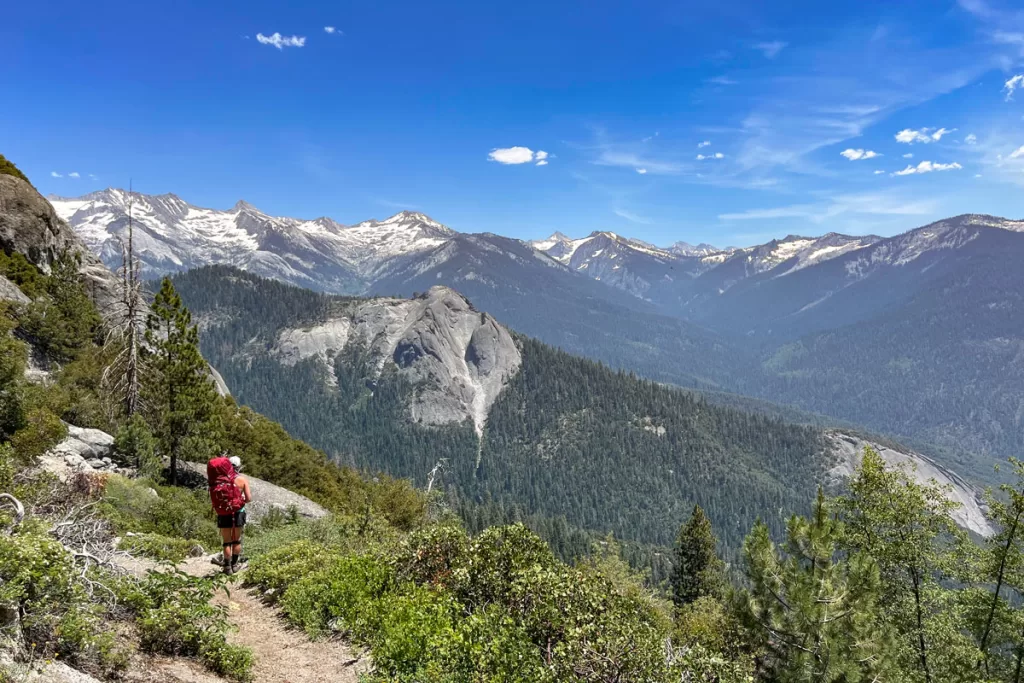
As with any trip into the backcountry, it’s imperative to plan for contingencies and the unexpected.
Consider: if you get lost or injured on your trip, how will you navigate, administer first aid, or communicate for help?
The following items are a good starting point for those considerations, but don’t rely solely on this list.
Always do your own diligent research, unique to your region and trip itinerary, to supplement anything missing off this generalized packing list.
Safety and First Aid Packing List:
- Communication device – we swear by the Garmin inReach mini. It’s pricey, but we find the peace of mind entirely worth the cost.
- Topographic maps and trail notes (stored in waterproof Ziploc bag)
- Compass
- First aid kit (see below for more detail)
- Signal mirror
- Safety whistle
- Matches (stored in waterproof Ziploc bag)
- Pocket knife
- Duct tape
Duct Tape Tip: rather than bring an entire roll, wrap a small amount around a piece of cardboard (as shown in the top right corner of the first aid kit photo below)
Backpacking First Aid Kit
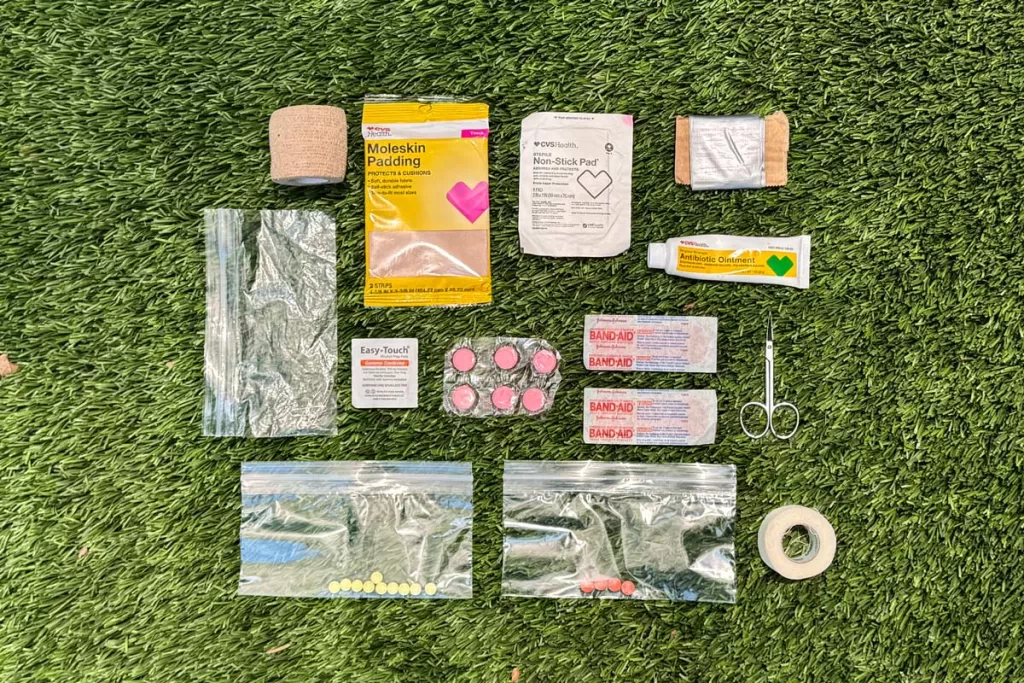
While you can purchase a ready-made backpacking first aid kit, it’s very simple to create your own (for a lot less money).
While on the trail, we always carry the following items. Aim to bring a travel-size packet of each.
Build-Your-Own Backpacking First Aid Kit
- Band-Aids
- Gauze pads
- Bandage wrap tape
- Moleskin
- Medical tape
- Advil or Tylenol
- Alcohol pads
- Antibiotic ointment (ex. Neosporin)
- Tweezers
- Antihistamine (ex. Claritin or Zyrtec)
- Antidiarrheal (ex. Imodium)
- Safety pins
- Small scissors
